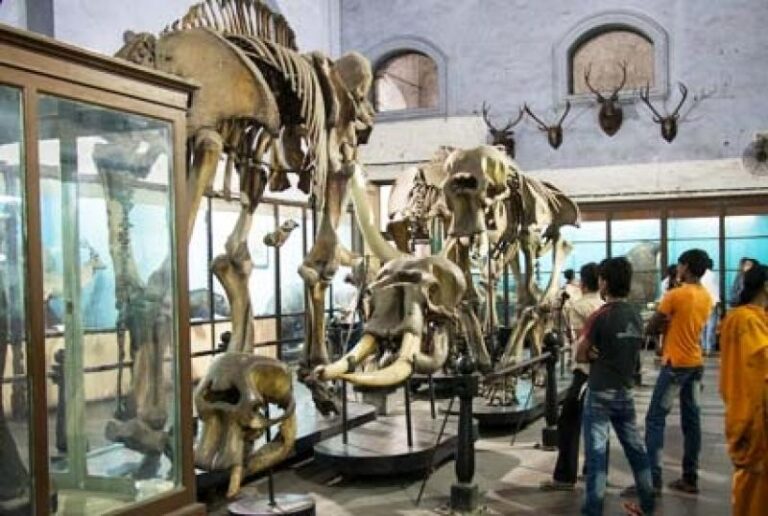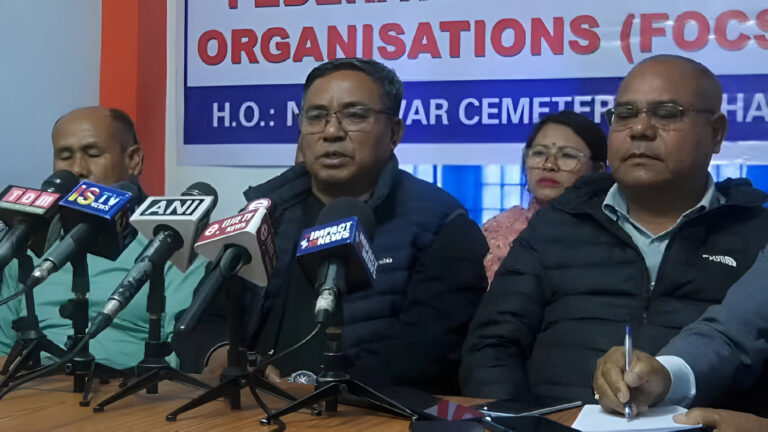Demand Raised to Stop Construction of Tamenglong-Jiri River
Summary of the News
In Manipur, a call to halt the construction work on the Tamenglong-Jiri River project has been raised. Local communities and environmentalists have expressed concerns about the project’s potential adverse environmental impacts, particularly regarding water sources and biodiversity. These concerns have prompted local organizations to take action and urge the government to reconsider the construction plans.
The Growing Demand to Halt Construction of the Tamenglong-Jiri River Project: Environmental and Community Concerns
When development projects like the Tamenglong-Jiri River project are initiated, they often bring promises of progress, improved infrastructure, and economic growth. However, they can also spark concerns among local communities and environmentalists, who fear the long-term impacts such projects might have on natural resources and ecosystems. The ongoing demand to stop the construction of the Tamenglong-Jiri River project in Manipur highlights the tension between development and environmental sustainability, particularly in sensitive regions like the Northeast.
In this article, we’ll explore the reasons behind the opposition to the construction of the Tamenglong-Jiri River project, the environmental stakes involved, and the voices calling for a more sustainable approach to development in the region.
What is the Tamenglong-Jiri River Project?
The Tamenglong-Jiri River project, like many other infrastructural endeavors, aims to harness natural resources and improve local infrastructure. The project involves the construction of dams, roads, and other development works near the Tamenglong and Jiri rivers, which are important water bodies in the region. These rivers serve as crucial water sources for surrounding villages, and the biodiversity they support plays an integral role in maintaining the ecological balance of the area.
While the exact scope of the project covers infrastructural improvements such as transportation links, the larger issue revolves around the environmental implications that come with such development. This has led to protests and raised concerns, especially from environmental groups and local communities.
Why the Opposition to the Project?
1. Threats to Water Sources
One of the primary concerns surrounding the project is the potential impact on the region’s water sources. The Tamenglong and Jiri rivers not only provide drinking water to surrounding communities but also irrigate agricultural lands and support local livelihoods. Any alteration to these water bodies due to construction can lead to water scarcity, reduced water quality, and the disruption of local agriculture.
Rural communities, in particular, are highly dependent on these rivers for their day-to-day activities, and even a slight disruption in the water flow could significantly affect their way of life.
2. Loss of Biodiversity
The Northeast of India is home to some of the country’s richest biodiversity, and Manipur is no exception. The forests and ecosystems around the Tamenglong-Jiri rivers are home to numerous species of flora and fauna, many of which are unique to the region. The construction of roads, dams, and other infrastructure could lead to deforestation and habitat loss, pushing already threatened species to the brink of extinction.
The environmentalists and conservationists who have raised their voices against the project argue that the loss of biodiversity could have far-reaching consequences. The delicate ecosystems of the region are already under strain from climate change and human activities, and any further disruption could lead to irreversible damage.
3. Displacement of Indigenous Communities
Manipur is home to several indigenous communities, many of whom live in and around the areas affected by the project. These communities have lived in harmony with their environment for generations, relying on natural resources for sustenance and survival. The construction of large-scale infrastructure projects could lead to the displacement of these communities, disrupting their cultural and traditional ways of life.
In many cases, the displacement of indigenous populations due to development projects leads to socio-economic challenges, including loss of land, livelihoods, and social cohesion.
4. Long-Term Environmental Impact
The opposition to the Tamenglong-Jiri River project isn’t just about immediate concerns—it’s also about the long-term environmental consequences. Dams and infrastructure developments have a lasting impact on the landscape. River ecosystems are altered, forests are cleared, and natural habitats are permanently changed. Over time, these changes can contribute to climate change, reduced rainfall, and other environmental challenges.
By halting the project, opponents hope to avoid long-term environmental degradation and promote sustainable development alternatives that won’t compromise the region’s natural resources.
Community Involvement and Grassroots Movements
At the heart of the protest against the Tamenglong-Jiri River project is a strong grassroots movement led by local communities and environmental organizations. These groups have come together to voice their concerns and call for a halt to the construction until a proper environmental impact assessment (EIA) is conducted. For many in the region, the opposition to the project is not just an environmental issue but a matter of survival.
Petitions and Protests
Several petitions have been submitted to the government, requesting an in-depth review of the project’s environmental and social impacts. Protests and public demonstrations have also been organized in an attempt to garner more attention and support for their cause.
The movement has gained momentum over the last few months, with both local and national environmental groups stepping in to support the cause. Through these collective efforts, the community aims to push for sustainable development practices that take into account the unique ecological and cultural context of the region.
The Role of NGOs
Non-governmental organizations (NGOs) have played a pivotal role in amplifying the voices of the local communities. By providing legal and technical assistance, these organizations are helping the community leaders engage with policymakers and government officials more effectively. NGOs have also been instrumental in spreading awareness about the environmental risks associated with the project, both within the region and across the country.
The Government’s Stance on the Project
While the concerns raised by local communities are valid, the government has maintained that the Tamenglong-Jiri River project is crucial for the region’s development. The government argues that the infrastructure improvements will bring much-needed economic growth to Manipur, especially in terms of transportation and energy generation.
Balancing Development and Sustainability
The challenge, however, lies in finding a balance between development and sustainability. While infrastructure development is necessary for economic growth, it should not come at the expense of the environment and local communities. The government has hinted at the possibility of conducting further environmental studies to address these concerns, but no formal commitment has been made yet.
For now, the debate continues, with both sides—supporters of development and environmental activists—presenting their case to the government.
Possible Alternatives to the Project
The Tamenglong-Jiri River project is not the only way to develop the region. Opponents of the project have suggested several alternative approaches to achieving sustainable development without compromising the environment.
1. Small-Scale Infrastructure Projects
Instead of large-scale construction, which tends to have more significant environmental impacts, small-scale infrastructure projects could be explored. These projects could focus on improving local facilities, such as schools, health centers, and roads, without causing extensive damage to the environment.
2. Sustainable Energy Solutions
Rather than relying on traditional dams and hydropower, the region could invest in alternative energy sources such as solar or wind power. These energy solutions are less intrusive and can provide clean energy without altering the natural landscape.
3. Community-Led Development Initiatives
Local communities could be empowered to lead their own development initiatives. By focusing on sustainable agricultural practices, eco-tourism, and forest conservation, the region could achieve economic growth without disrupting the environment.
Conclusion: Protecting Manipur’s Environment for Future Generations
The debate over the Tamenglong-Jiri River project highlights a larger issue faced by many developing regions—how to balance economic development with environmental sustainability. While infrastructure improvements are necessary, they should not come at the cost of biodiversity, water sources, and the livelihoods of indigenous communities.
For the people of Manipur, the fight to halt the Tamenglong-Jiri River project is about more than just protecting their environment—it’s about preserving their way of life for future generations. Whether through alternative development approaches or by re-evaluating the current project, the region must find a way to progress without sacrificing its natural resources.
FAQs
- Why is there opposition to the Tamenglong-Jiri River project?
- The opposition stems from concerns about water scarcity, loss of biodiversity, and displacement of local communities due to the project’s environmental impact.
- What are the environmental risks of the project?
- The project poses risks to local water sources, biodiversity, and long-term ecological sustainability, with potential deforestation and habitat loss being key issues.
- What are the alternatives to the project?
- Alternatives include small-scale infrastructure projects, sustainable energy solutions, and community-led development initiatives that minimize environmental impact.
- How is the community involved in the protests?
- Local communities, alongside environmental groups and NGOs, have organized protests, petitions, and awareness campaigns to halt the project.
- What is the government’s stance on the project?
- The government supports the project for its potential to boost economic development but faces pressure to address environmental concerns raised by local communities.




